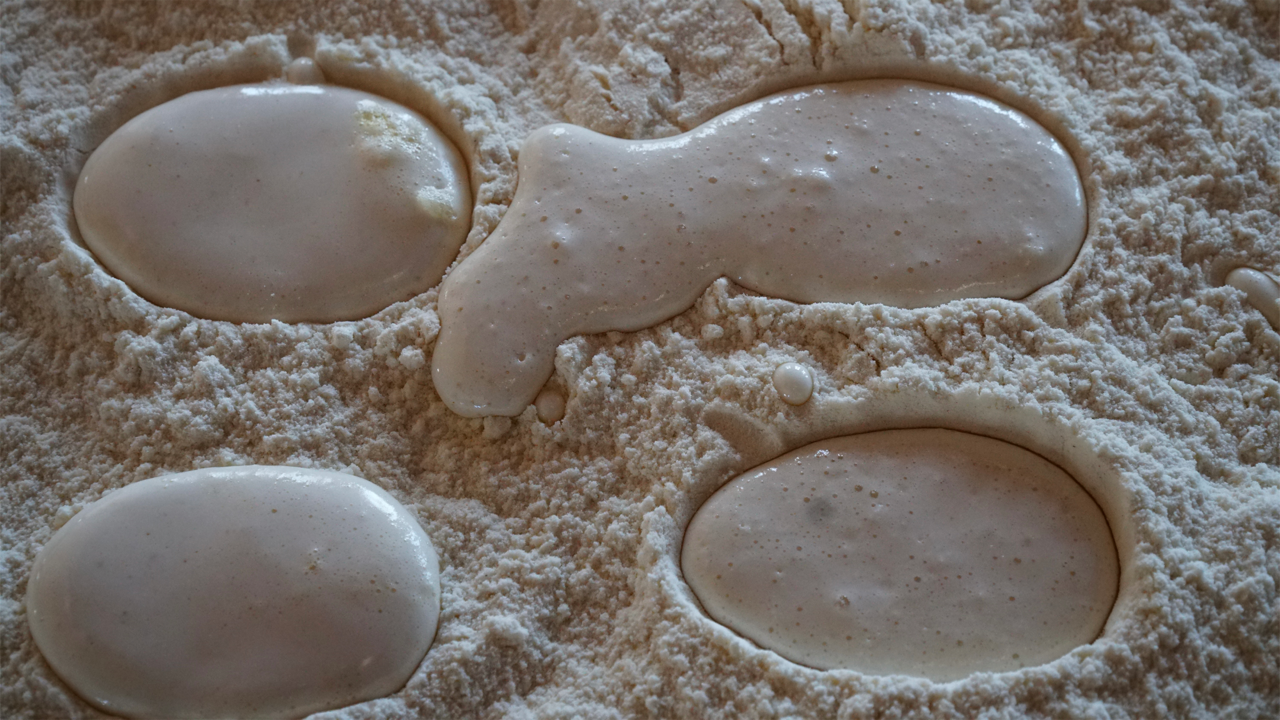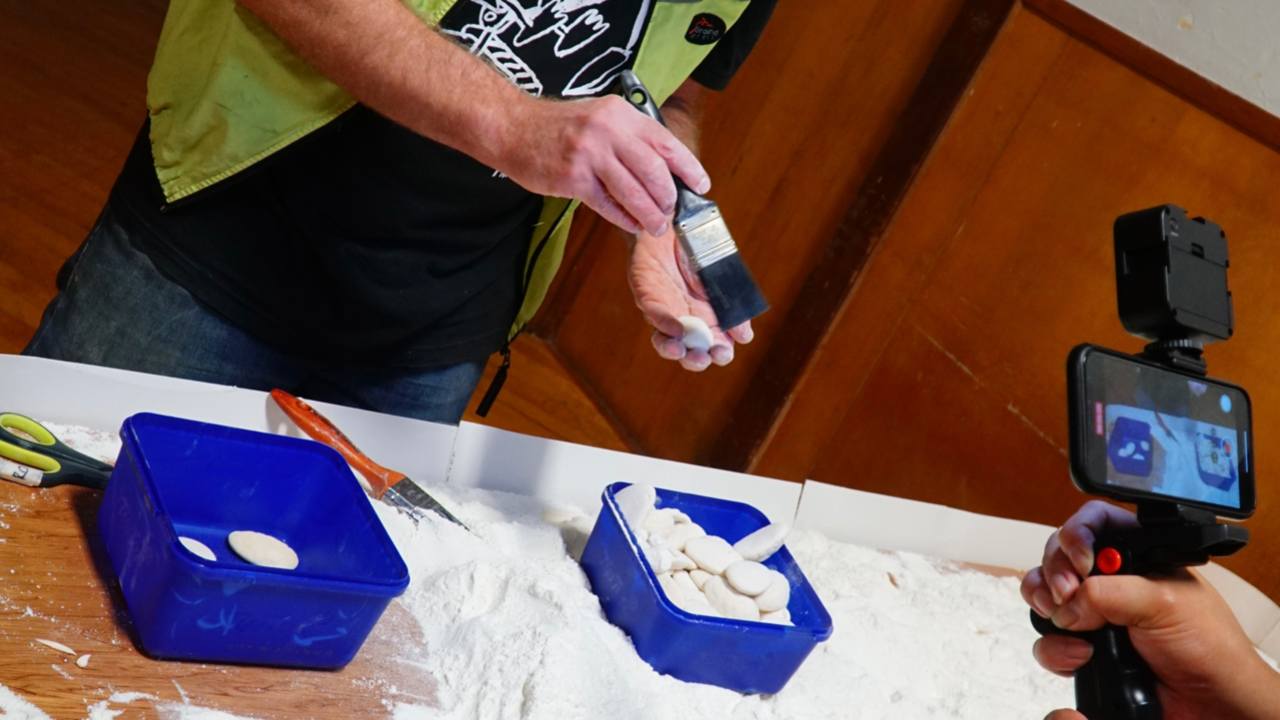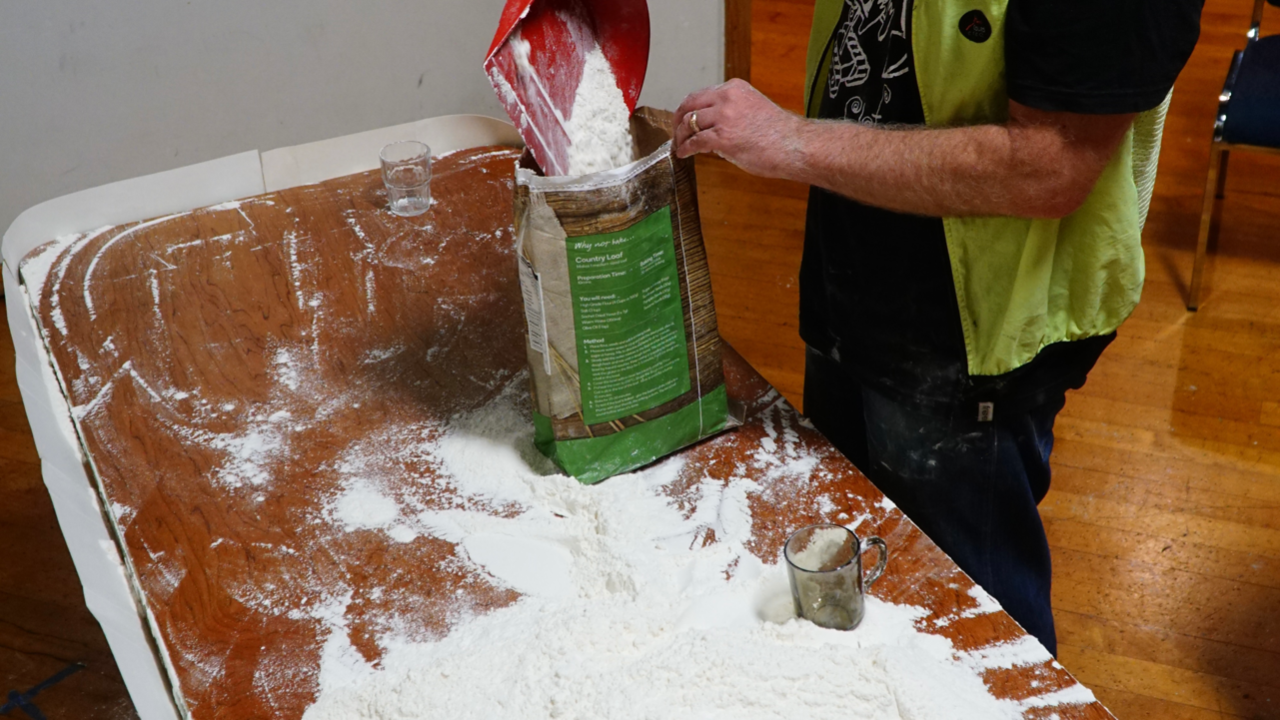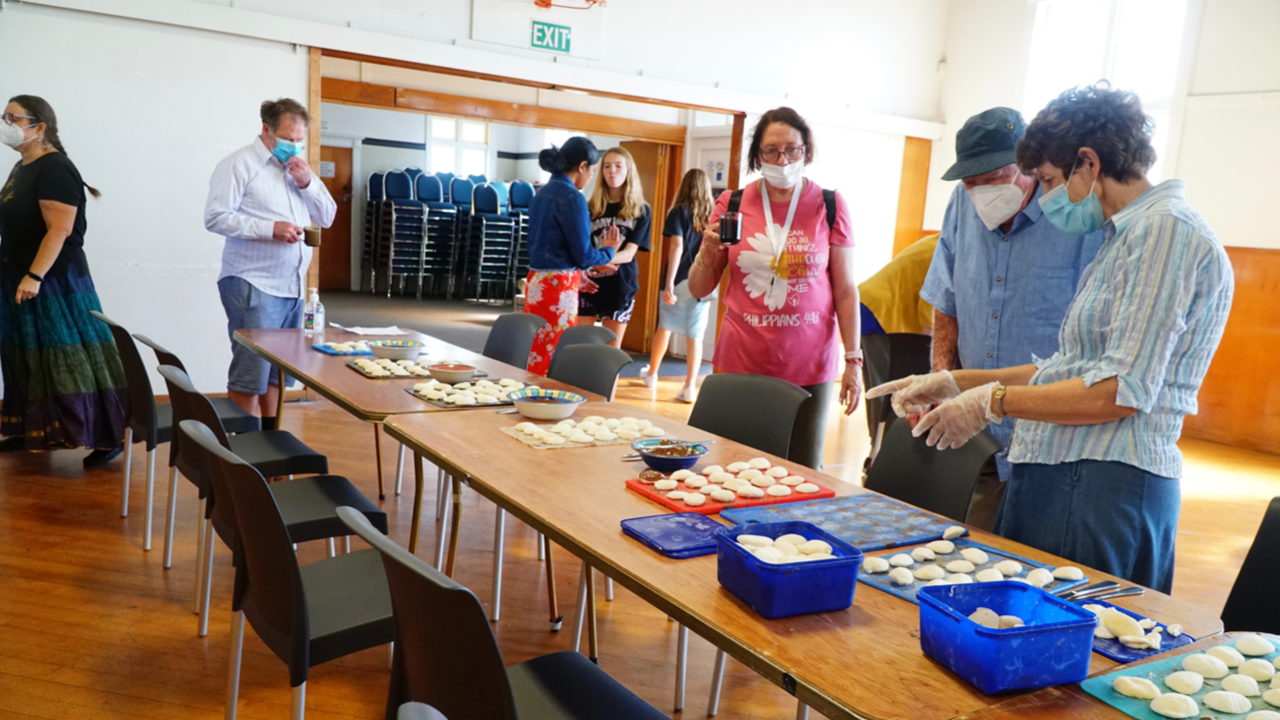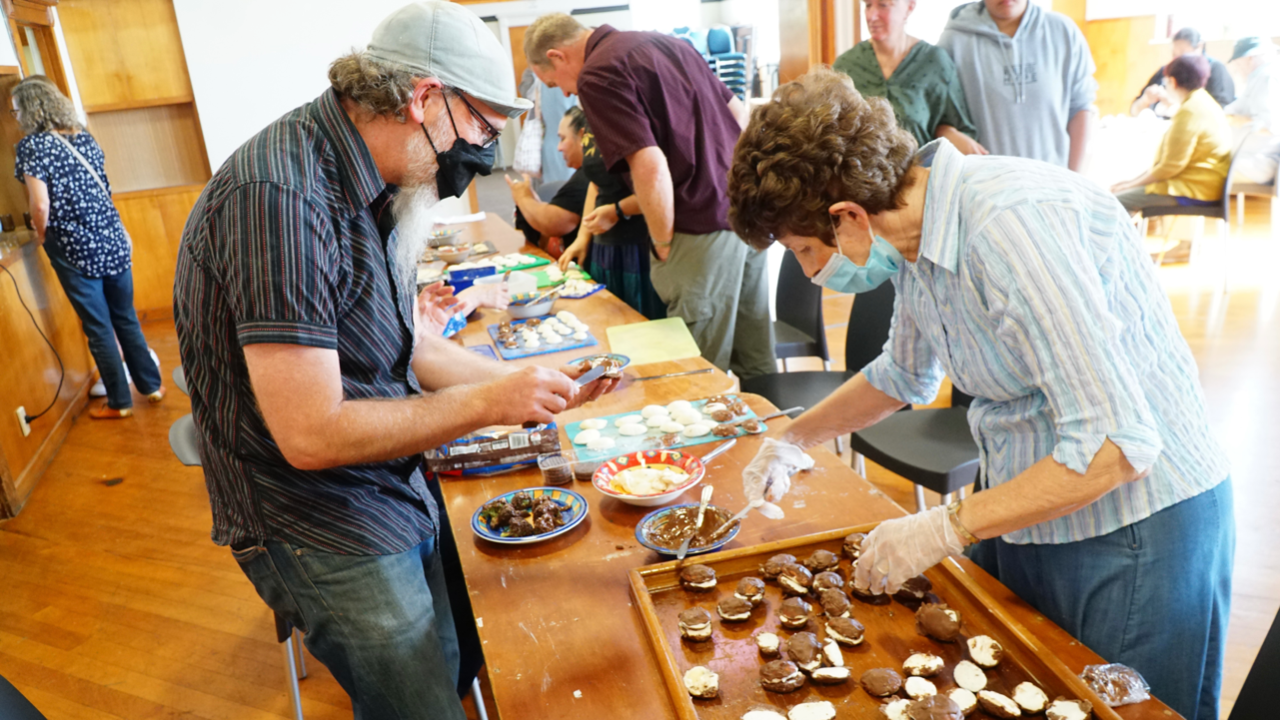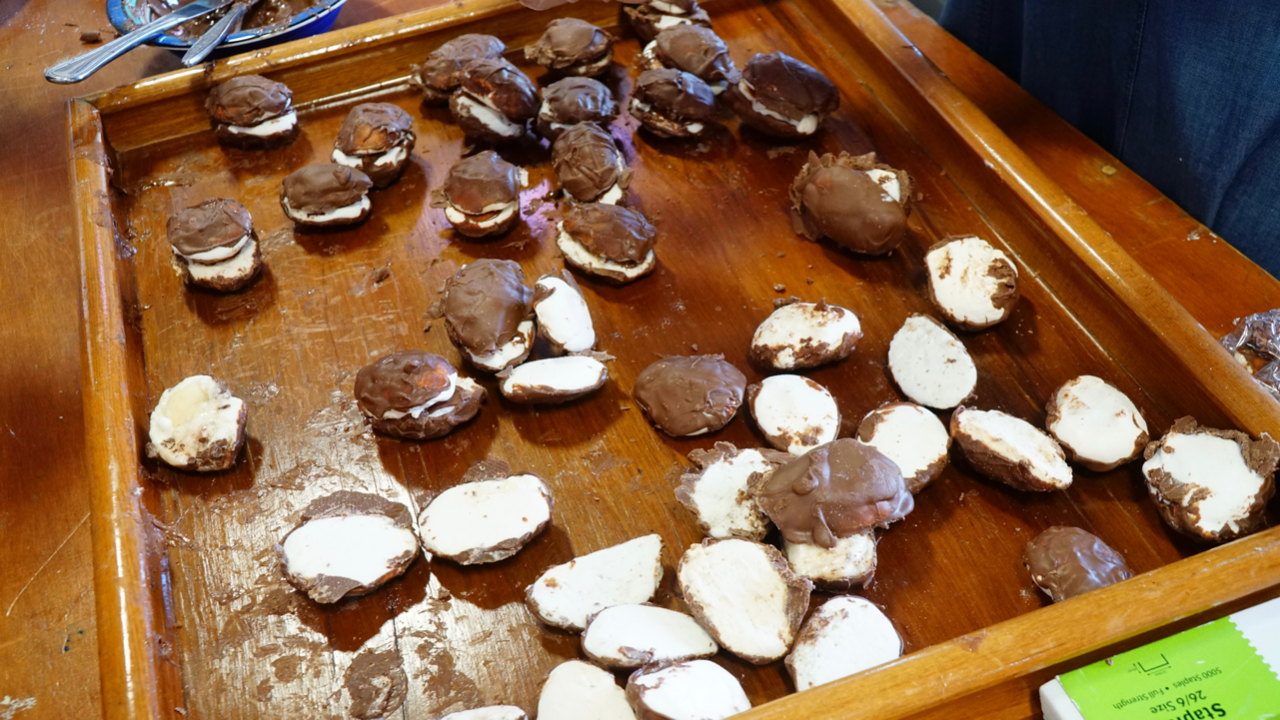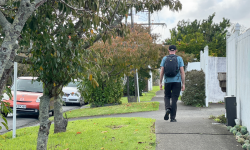
Heather Roberts is the founder of Just Kai, a group that promotes slave-free choices in the food supply chain. Lovers of chocolate (or not), here’s a great Easter activity for your faith communities to raise awareness around slave labour and share slave-free chocolate eggs this Easter. Heather and her church, Hosanna Avondale Baptist Church (Auckland), shows us how it’s done:
In April 2022, I led my church, Hosanna Avondale Baptist, in making around 250 chocolate-coated marshmallow Easter eggs to share with the whole congregation. It was a mammoth, fun, and very sticky project, with a couple of serious goals behind it:
- God has placed a burden on my heart for the children who grow much of the cocoa that goes into our Easter eggs, as well as the adults in forced labour producing some of our sugar. I was keen to make slave-free Easter eggs with my church to help raise awareness of these issues* and to show people how, with some knowledge, they could be part of helping the people who produce our food.
- In April 2022, Auckland was not long out of lockdown, and many people with health issues (including myself!) hadn’t resumed regular attendance of our in-person church services. By collectively making enough Easter eggs to share with the whole church family (and delivering them to the people not present), I hoped we could be joined together in a tangible way at a difficult time.
* If that’s something you’d like to learn more about, please check out the project I’ve founded – Just Kai. We work to raise awareness of forced labour and child labour in our food supply chain and identify and promote slave-free options.
We’re no longer facing government-mandated lockdowns, but various COVID-related pressures mean that even more children are now involved in cocoa production than there were back then. Our latest reliable data is from 2017, when it was found that around 2 million children were involved in cocoa production. They’re mostly aged 12 and up, but some are as young as 8. Their work is physically demanding, often leading to life-long health impacts. There isn’t much money in growing cocoa, so kids often have to be pulled out of school to help keep their families afloat financially – and COVID has only made this worse.
So, this Easter, maybe your church would like to make Easter eggs for each other – or maybe even for your local neighbourhood? To share the love of Christ with both those who eat the eggs and those who produce the ingredients, and to join together as a community in a fun project.
Here are some pointers to get you started:
- The basic recipe is here, along with pointers on how to identify the slave-free sugar and child-labour-free chocolate to make it with. (Note: you can buy chocolate made with child-labour-free cocoa very affordably in every supermarket in Aotearoa. If you have a Countdown supermarket near you, slave-free sugar is also extremely accessible). If you have vegetarians, Muslims or pregnant people in the group you’d like to share the eggs with, use the vegan version of the recipe for them.
- You’ll need to do the Easter eggs over two days. On day one, you make the marshmallow inners. On day two, you coat the marshmallow halves with chocolate and join them together into eggs. You only want a small group of people for day one (we had 5 or 6) – day one involves lots of really hot sugar syrup, so you want to ensure you know where everyone is so no one gets burned. The marshmallow process is quite straightforward, and there are roles children could easily fill. But you don’t want really young children randomly running around! Day two is when you bring in the whole church.
- The regular marshmallow halves keep fine in the freezer more-or-less indefinitely, so you can schedule the two days whenever suits you. They don’t need to be one day after the other. However, if you’re doing the vegan recipe, you want to make the marshmallows one day and coat them the next – otherwise, the marshmallow goes soggy.
- When working out the ingredients you need, buy a bit extra unless your church has a supermarket nearby. I found the ingredients didn’t go as far as I’d expected when making them in bulk with lots of helpers. I think there was a bit more ‘lossage’; the eggs came out a bit bigger than when I make them on my own. Also, different electric beaters make the marshmallow a bit more or less fluffy, which affects how much you get. I ended up making seven batches of marshmallow to get around 250 actual eggs (note that the vegan recipe makes many fewer eggs, so it would need to be multiplied even more).
- Make multiple batches of the recipe, not one huge recipe, unless you have access to an industrial-sized beater!
- Note that each batch of the marshmallow recipe uses two egg whites; you’ll end up with a lot of yolks! If someone in your congregation makes ice cream, they’ll probably be delighted to receive a stash of yolks. Lemon curd is another good way to use up excess yolks.
- On marshmallow day, we had three of everything (three beaters, three saucepans, three cooking thermometers etc.) and around 5 or 6 helpers. That seemed to work well. Everyone was given a printout of the recipe at the start. Make sure at least some of them have also watched the recipe video beforehand.
- To form the marshmallows, we spread flour across several clean trestle tables and taped a wall of thin cardboard around the edges of the tables to stop the flour from falling off. The cardboard was from cereal boxes we’d asked the congregation to collect in the weeks leading up to the event. Again, as with the marshmallow recipe, we found the flour didn’t go as far as we’d expected, and we used seven 5kg flour bags for around 500 half-eggs. Note that the flour doesn’t get used up or dirtied in any way, so it can be passed on to the bakers in your congregation once you’re done with it.
- It’s easiest to stamp out the flour with an egg-shaped ‘stamp’ using a handle rather than an actual egg. We used one I’d made from DAS modelling clay, sealed with varnish, so it’s washable (photo).
- The marshmallows must be removed from the flour moulds before they can be stored or chocolate-coated. We had a small team of three who came back on the evening of day one to do this, equipped with a sieve (to remove most of the flour), a few pastry brushes (to finish the job) and a clean dustpan and broom to transfer the flour back to the bags it came in.
- Note that the recipe calls for putting sugar-paste egg yolks in each egg: I decided this was too much hassle when working with a big group and left this step out.
- For the chocolate-coating day, make sure a few people have watched the chocolate-coating video first to have an idea of what to do. Have those people also keeping an eye on things and keeping things moving – replenishing melted chocolate as it runs out, putting trays of coated half-eggs into the fridge to set, bringing them back out when they’re done etc. We had three people doing this.
- On the chocolate-coating day, we made one big mistake: we didn’t make it clear that our vision was for them to make the eggs and take them home to eat later. A lot of eggs got eaten along the way, making it a lot harder to work out how to ensure everyone (both those there on the day and those not present) got some. It did help that we’d provided child-labour-free chocolate biscuits for people to snack on whilst working with all that tempting chocolate, but clear communication was also needed!
- If all the eggs are going to people present on the day, this might be a fun thing to do on Easter Sunday. In our case, many of the eggs went to people who weren’t there, so we did it after the service on Palm Sunday instead.
- At the end, we put the Easter eggs into labelled brown paper bags, two for a person living alone and one for each household member otherwise. The labels we used are here. Our pastor then delivered them to the people who weren’t there the following week.
Check out the photo gallery bellow to see it happening, and please do get in touch if you do this with your church – or also if you’re keen to have a go but would like more info first.
Photos: Supplied by Heather Roberts. See the full photo gallery here.




